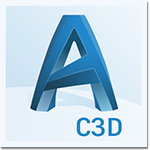
Categories
Values
Enhance Staff Productivity
Reduce Production Timelines
Improve Customer Service
Reduce Costs
Ensure Compliance
ArcGIS
ArcGIS is an infrastructure for creating maps. It is a complete system that allows you to collect, organize, manage, analyze, share and distribute geographic information.
About Product
Description
ArcGIS is a geographic information system (GIS) for working with maps and geographic information. It is used for: creating and using maps; compiling geographic data; analyzing mapped information; sharing and discovering geographic information; using maps and geographic information in a range of applications; and managing geographic information in a database.
The system provides an infrastructure for making maps and geographic information available throughout an organization, across a community, and openly on the Web.
ArcGIS includes the following Windows desktop software:
- ArcReader, which allows one to view and query maps created with the other ArcGIS products;
- ArcGIS for Desktop, which is licensed under three functionality levels:[3]
- ArcGIS for Desktop Basic (formerly known as ArcView), which allows one to view spatial data, create layered maps, and perform basic spatial analysis;
- ArcGIS for Desktop Standard (formerly known as ArcEditor), which in addition to the functionality of ArcView, includes more advanced tools for manipulation of shapefiles and geodatabases;
- ArcGIS for Desktop Advanced (formerly known as ArcInfo), which includes capabilities for data manipulation, editing, and analysis.
- There are also server-based ArcGIS products, as well as ArcGIS products for PDAs. Extensions can be purchased separately to increase the functionality of ArcGIS.

